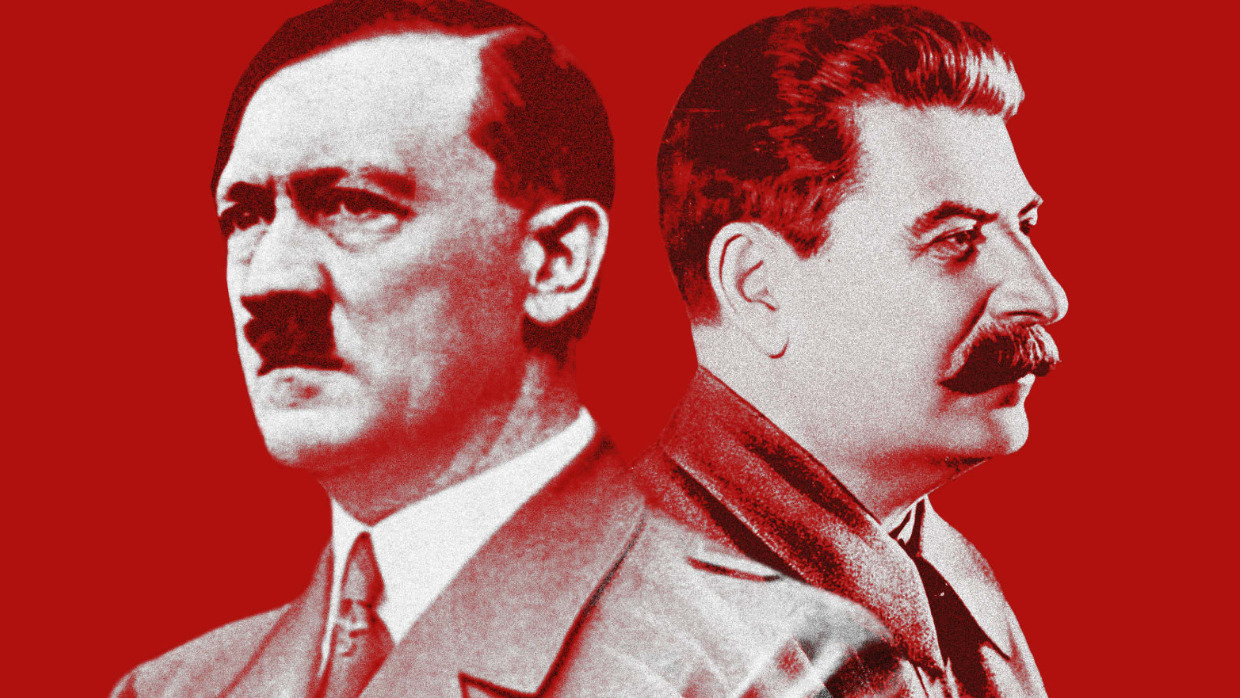 An Open Letter to University Presidents
An Open Letter to University Presidents


5 min read
For the first two years of World War II, Stalin and Hitler were allies.
There is no denying that a vast number of Soviet citizens lost their lives in World War II. Without the Russian people’s appalling suffering and sacrifice, the Allies might not have triumphed in the end.
But there is also no denying that Moscow was Nazi Germany’s partner in unleashing the war, the deadliest in human history, in the first place. Russia is culpable for plunging the world into war — a record the Kremlin’s propagandists have been trying to obscure for decades.
On Aug. 23, 1939, German Foreign Minister Joachim von Ribbentrop and Soviet Foreign Minister Vyacheslav Molotov signed a non-aggression treaty, agreeing to conquer and divide Poland and the rest of Eastern Europe.
World War II is commonly said to have started on Sept. 1, 1939 , when German forces invaded Poland. But it would perhaps be more accurate to date the start of the war nine days earlier. On Aug. 23, 1939, German Foreign Minister Joachim von Ribbentrop and Soviet Foreign Minister Vyacheslav Molotov signed a treaty of non-aggression, whereby their governments agreed to conquer and divide Poland and the rest of Eastern Europe. It was under the terms of this pact that the Nazi Wehrmacht moved into western Poland on Sept. 1 and Josef Stalin’s Red Army invaded Poland from the east 16 days later.
“Soviet and German forces set up brutal occupation regimes in their respective spheres and forcibly transferred hundreds of thousands of Polish citizens to forced-labor sites,” recounts Mark Kramer, the director of the Cold War Studies Project at Harvard’s Davis Center for Russian and Eurasian Studies.
On 22 September the Soviet and German forces celebrated the conquest of Poland with a joint military parade at Brest-Litovsk (Brześć-Litewski), a small city on the demarcation line established under point 2 of the secret protocol to the Nazi-Soviet Pact. Sporadic fighting continued for the next two weeks, but by early October 1939 the Polish state had ceased to exist.
Devouring half of Poland didn’t slake Moscow’s appetite. In the months that followed the Nazi-Soviet takeover of Poland, as Hitler’s troops conquered Denmark, Norway, Belgium, Holland, and France and bombed much of London into rubble, Stalin’s forces continued their illegal war of aggression and conquest. Writes Kramer:
Even as the Red Army was imposing Soviet rule on eastern Poland, Soviet troops also began moving into the three Baltic states (Estonia, Latvia, Lithuania), which had enjoyed some two decades of independence after the First World War. In subsequent months, as Soviet military and state security forces continued to pour into the Baltic countries, they compelled the local governments to comply with Moscow’s demands. Eventually, in mid-1940, Soviet occupying forces replaced the indigenous governments with puppet regimes that voted for “voluntary” incorporation into the USSR. The same pattern was evident in the formerly Romanian territories of Bessarabia and northern Bukovina, which the Soviet Union occupied and annexed in late June 1940.
The only major impediment to the expansion of Soviet rule in Eastern Europe came in Finland, where the entry of Soviet troops at the end of November 1939 sparked a brief but intense war.
In short, for the first two years of World War II, Nazi Germany and Soviet Russia were allies. They secretly planned and jointly began the war that inflicted such horror and destruction. Later, of course, Hitler double-crossed Stalin and ordered the Wehrmacht to invade the Soviet Union in June 1941. But before that turning point, the two totalitarian powers cooperated closely. The Soviet military, for example, was supplied with enormous quantities of German military technology. In the fall of 1939, the Germans agreed to supply Soviet submarines fighting against Finland. At the height of their cooperation, notes Ian Johnson, a professor of military history at Ohio State University, Stalin even authorized the German navy to operate a naval base near Murmansk to attack British shipping and support the invasion of Norway.
From 1939 through mid-1941, Soviet Russia collaborated with the Nazis in wreaking slaughter and savagery on the nations of Europe.
In 2014, Russian President Vladimir Putin made it a crime for Russians to “spread intentionally false information” — i.e., to tell the truth — about the atrocities committed by Soviet forces during World War II. As a result, writes Kramer, “the brutality of the Soviet occupation of eastern Poland, including massacres and widespread rapes, is a taboo subject in Russia nowadays.” In much the same way, Putin has made it illegal for Russian journalists today to report on Moscow’s massive violations of human-rights crimes in Ukraine.
From 1939 through mid-1941, Soviet Russia collaborated with the Nazis in wreaking slaughter and savagery on the nations of Europe. The regime that rules in Moscow today is of course not responsible for Stalin’s evil alliance with Hitler. But no one should be fooled as Putin seeks to cloak himself and his calamitous Ukraine war in the “heroic” history of World War II-era Russia. Moscow and Berlin together started that horrific war, and used it to impose a reign of tyranny across Europe. Germany no longer terrorizes its neighbors. Russia still does.
A version of this op-ed originally appeared in “Arguable,” a weekly newsletter written by Boston Globe columnist Jeff Jacoby.
